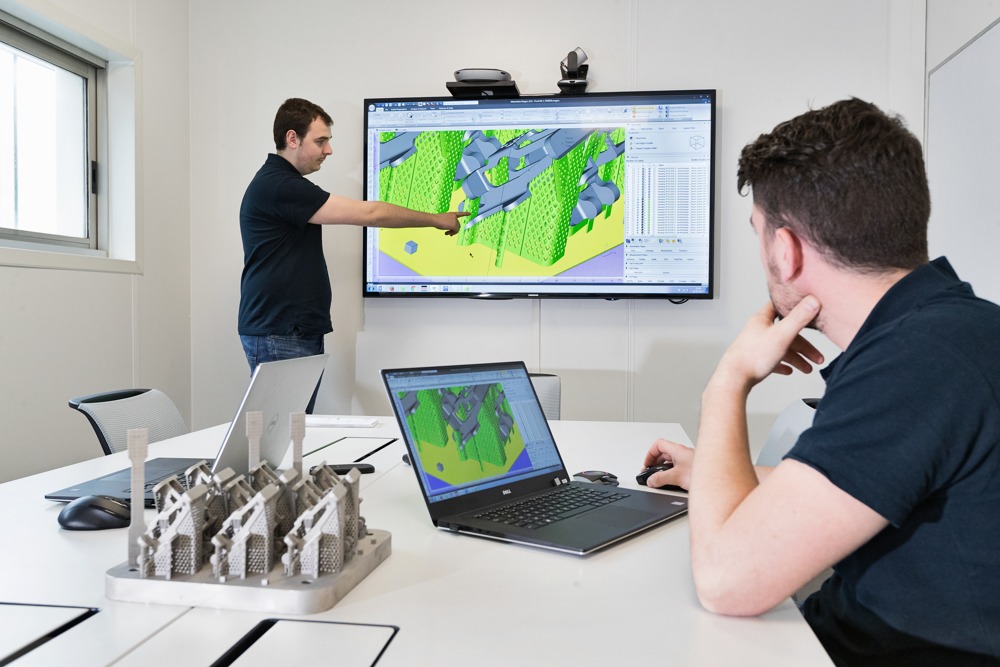The shape of things to come

In a Q&A session, Aerospace Manufacturing hears from LISI Aerospace Additive Manufacturing’s CEO, Christophe Sarrazin, about the company’s role in additive manufacturing, and how it’s helping to shape the way large aerospace components are being made.
In a Q&A session, Aerospace Manufacturing hears from LISI Aerospace Additive Manufacturing’s CEO, Christophe Sarrazin, about the company’s role in additive manufacturing, and how it’s helping to shape the way large aerospace components are being made.
Additive manufacturing (AM) continues to demonstrate its legitimacy in aerospace manufacturing. The gains in mass and volume optimised by the new geometries offered by this process - combined with topological optimisation, make AM a technology much sought after by the aerospace sector.
Thales Alenia Space and LISI Aerospace Additive Manufacturing (LAAM) recently announced a partnership by qualifying and manufacturing large parts for satellites. The LISI group has provided Thales Alenia Space with products manufactured using a Concept Laser X Line 2000R, said to be the only machine of its size that is currently qualified to produce flying parts. With a capacity of 400 x 800 x 500mm, it currently produces aluminium parts whilst claiming to offer a unique range of designs.
Q) What are the types of trends and demands placed on your company by today’s aerospace designers?
A very close relationship with our customers is essential, from co-design to co-establishing evaluation criteria. Customers now understand that a re-design phase is regularly necessary in order to enjoy the full power of AM. We need to develop a mutual trust, so that the co-working stages are beneficial to both of us.
Q) What are today’s customers looking for in terms of AM-related performance solutions?
Large size build chambers are vital for our customers. Our Concept Laser X line 2000R with an 800 x 400 x 500mm build chamber is definitely an asset in the market. Also, our customers are looking for a complete solution - from co-design to delivery of final part. They are very receptive to the complete workshop sessions we arrange which let their engineering ‘swim’ in the process. Half a day is enough for the main theoretical course, whilst half day is also spent on our shopfloor to get ‘hands-on’ with the parts and see the team in action.

Maturity is at an early stage and definitely needs to improve. Each subcontractor needs time to assimilate AM constraints. Raw material supply isn’t a problem anymore, because much of capacity was created last year. This is why we work very closely with our local partners for heat treatment and machining operations, for example.
Q) Comprising major machine tool suppliers, subcontractors and powder suppliers, where is the real ‘hive’ of innovation and activity currently taking place?
It is moving every day, as we speak. Nevertheless, we believe the reliability and robustness of the machines are the most important activities currently in progress. We also believe that the work done on simulation is starting to provide good results in order to avoid repetitive design loops; this is indeed very good in terms of cost.
Q) How much of a post-production issue is it to remove support webbing after the printing process?
The main issues remain for internal channels and geometries. We are currently working on various post-treatments which can be used to remove the supports (mechanical and chemical etching being the two of them), even though they aren’t reachable by hand. The second way of development is the automation of this manual removing process, which will be very beneficial when serial production becomes the standard in additive layer manufacturing (ALM).
Q) How much is AM being used to print tools, say for sending parts over the wire to support an aircraft on the ground (AOG)?
The ‘AOG ALM market’ is indeed picking up, but part qualification can often be a roadblock afterwards. We have already received a couple of requests for specific repair tooling – but our main focus is on serial flying parts which we started to develop for Dassault Aviation.
Q) Are derivatives of AM, such as wire and arc additive manufacture (WAAM) and Electron Beam Melting (EBM) finding favour in the aerospace industry?
Our customers have high hopes for EBM, especially for parts with much more volume than surfaces. Our ARCAM Q20+ using EBM technology is the right tool to evaluate and qualify this specific process. The WAAM is not in our strategy which is more concerned with the powder bed metal aerospace ALM. Therefore, we’ve asked our partner, Poly-Shape to evaluate the various available machines in order to select the best current players in this area. If the technology appears to be reliable and competitive, we will be ready to invest.
Q) AM enables manufactures to ‘print’ incredibly complex parts. Is this truly the way forward, or are cycle times and flight-ready part qualification an issue?

Q) What do you feel are the most important assets of a company?
Firstly, a defined strategy. If you start to jump on every available new ALM machines and technology, you’re not focusing your limited resources on an achievable goal and you will not reach the industrial strength - which the market is demanding. This is why we focus on powder bed metal 3D printing for aerospace. The experience of people is indeed key for the success of this new technology; our human resources department needs to be very proactive in order to propose career evolutions and avoid losing this specific workforce.
Q) Finally, what differentiates your company from the competition - why should a customer use you over your nearest rival?
Dedication to the aerospace market is key. Large parts manufacturing and serial production are the other main reasons why our customers are counting on us. We believe that the support of the LISI Aerospace Group as a recognised aerospace industrial partner - combined with the Poly-Shape team’s ALM know-how - will contribute to our future success.












